|
Longton - the Potteries’ capital
of public houses
  
click the
"contents" button to get back to the main index & map
next: Newcastle's tradition of pubs
previous: The Beer-muder
Triangle of Longton |
Historian Fred Hughes
writes....
“There’s no doubt that Longton was the Potteries’ capital of public
houses,” local historian Alan Myatt assures me.
“And if it wasn’t a pub it was some other place to hide away and hatch out
conspiracies. One in Bath’s Passage was known as the ‘Bomb and Dagger.’
Its proper name was the City Tea Rooms where unemployed men would sit for
as long as possible making their drinks last. It seems to have been a
place frequented by Longton’s Irish. Rumour had it they were planning
insurrection and that’s why it got its nickname.”
Whatever the reason often names were given to pubs with the most far-flung
connections.
|
“Longton Pubs with grand names like Sir Robert Peel and Sir Charles
Napier are outrageously vague,” says Potteries historian Steve Birks.
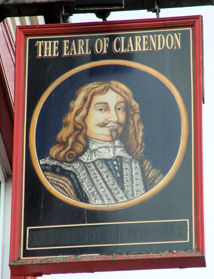
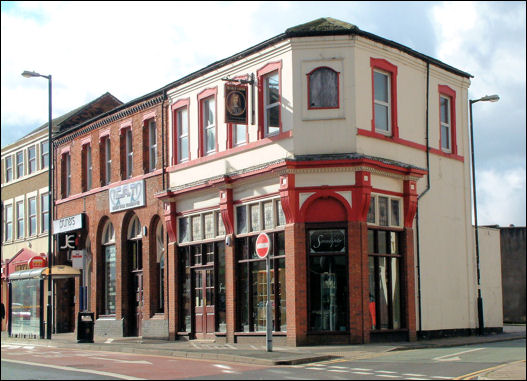
the Earl of Clarendon, the Strand, Longton
“But folk were proud of their town and built their pubs with splendid
architectural features. One prominent building with a famous name is
the Earl of Clarendon. Now, what a posh-sounding name that is!
What we know of Clarendon is that he was a close advisor to Charles I.
He was a founder of the American State of Carolina who fell into
disgrace and was impeached and exiled for causing the enslavement of
prisoners to work for him rather than go to prison. He is best known
for writing the first classic history of the English Civil War. But,
what on earth has any of this got to do with Longton?”
|
Alan agrees.
“Although the Clarendon was a big pub with a big name most people knew it
as The Clock,” he says “Mind you it had nothing to do with time; it was
just that the landlord’s name was Hickory. Now that’s typical Potteries’
humour.”
Another Longton historian Alan Mansell has a complete record of every pub
that stood in Longton. A member of the Potteries Pubs Preservation Group
he tells me that it’s not always possible to decipher fact from fable.
“An alternative tale about the Bomb and Dagger for instance recalls that
it was popular with American troops during the war and stood on a
demolished site where Cresswell’s Ironmongers is today,” he says.
But who can say after all these years, I wonder.
“That’s the task I’ve set myself,” says Alan producing a huge file of
photographs. “I’ve gone all through Longton cataloguing all the Victorian
pubs that are still standing. I have photographed them and put them
alongside a contemporary image of when they were open as a pub. Sometimes
I’ve found just a piece of spare land or where a new building has replaced
it. But I’ve been surprised to find so many in alternative uses. It
provides a wonderful picture of another age that we can still see.”
Alan has produced a unique album of a long-forgotten Longton. For instant
the Blue Bells of Scotland and the Roebuck Hotel are still standing in
Caroline Street having been closed as pubs many years ago and found use in
other retail trades.
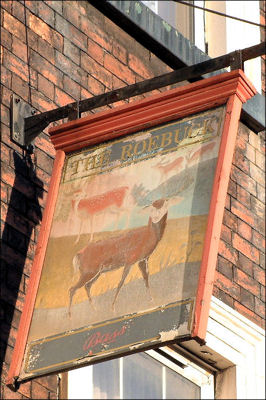
the
Roebuck
|
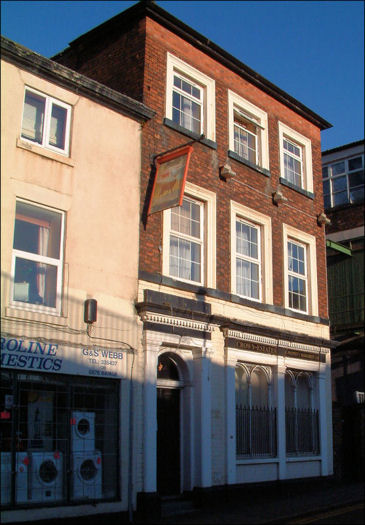
the
Roebuck, Caroline Street, Longton
“The Roebuck may have been just another pub. But a news report in the
Weekly Sentinel of 1864 tells of a massive explosion that occurred there,”
he recalls.
“It’s the story of the landlord name Henry Johnson who’s second job was a
coalminer. The report tells us that he was in the habit of keeping a large
stock of explosives in his bedroom from which he used to blast coal free
underground. In the next room were his two sleeping children this night
when an explosion went off causing windows and doors to be blown through
with a lot of structural damage. Happily, the children escaped serious
injury although the explosion was heard for miles around. It is a
remarkable illustration of how people lived in those times.” |
It seems chapels and pubs were the preferred community centres then.
“They really were home-from-homes,” continues Alan. “Pubs were premises
where people gathered to celebrate births, marriages and deaths. Another
Sentinel report in 1869 tells of a 63 year-old woman customer falling to
her death down the cellar steps of the Dog and Partridge in Bagnall
Street. No reason was given as to what she was doing in the cellar. An
inquest simply reported her death as being accidental. But life was
cheap then.”
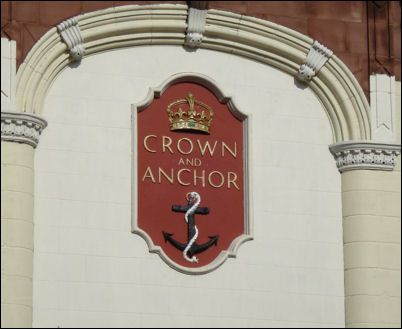

the Crown and Anchor, Times Square, Longton
Longton’s most prominent public house is the Crown Hotel.
“Now that was something to talk about when it was built,” says Alan. “It
was described in trade directories as a favourite rendezvous of commercial
gentlemen and Americans and feted as popular with families. Originally
named the Crown and Anchor it was built in 1887 on the site of another
long forgotten pub, the White Horse. One popular landlord here was four
times Longton Mayor George Bennion.”
Good pubs and bad, we still love them. Perhaps a few lines from
Staffordshire poet Reginald Twemlow sum up Longton pubs best:
‘At first the name may cause a stagger
But it’s the best – the Bomb and Dagger.
The stairway’s dark to give it class,
There’s scarcely room for two to pass.
But does the Hilton offer this?’
  
click the
"contents" button to get back to the main index & map
next: Newcastle's tradition of pubs
previous: The Beer-muder
Triangle of Longton |